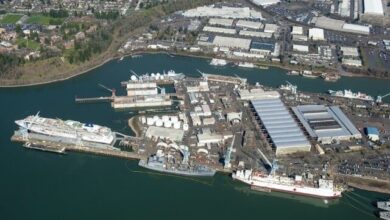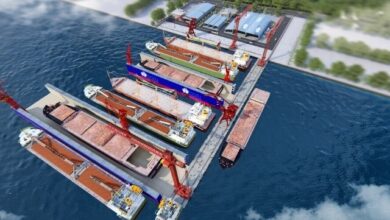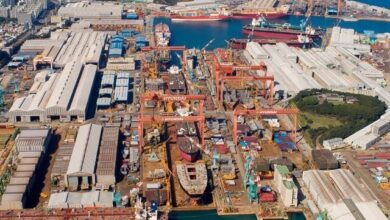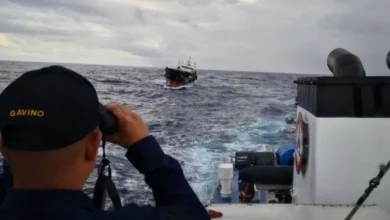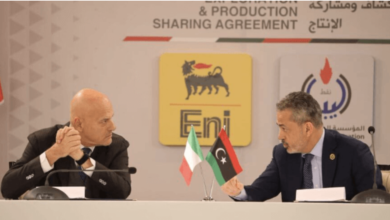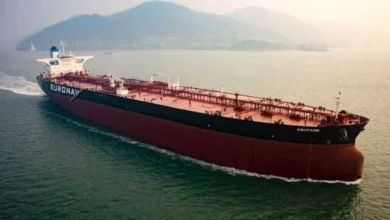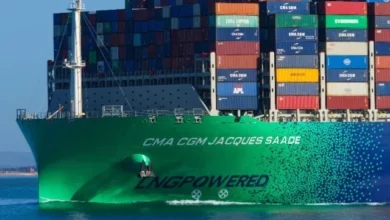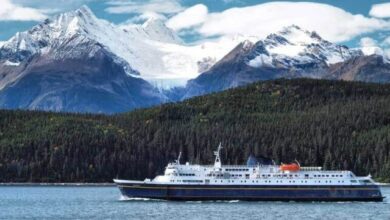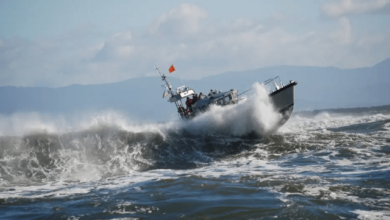Prof. Dr. M.M. El-Gammal write :RETROSPECT AND PROSPECTS OF SHIP BREAKING AND SHIP RECYCLING INDUSTRIES IN EGYPT


By : Prof. Dr. M.M. El-Gemmal, Professor Emeritus
Ex-Head of Naval Architecture and Marine Engineering,
Faculty of Engineering, University of Alexandria, Egypt
World shipping and surface industries will in the very short coming period of time face unexpected stringent problems. Ship breaking and dismantling using primitive and manual means, are being noted in South East Asian Countries. As seen in Figure 1, that the five top nations on the world in the period between 2003 till 2013, were Bangladesh at the top with 84.8%, followed by India with 78.8%, then China with 66.6% , followed by Pakistan 38.5% and Turkey with 7.7%,
The first ship breaking has been carried out in Pakistan. Following the Pakistani ship breaking steps, were India, Bangladesh and China and the introduced very recently Turkey. Figure 1, shows the number of dismantled and broken ships in those countries in 2017
During the second quarter 2017, the following numbers of vessels, were broken in other locations: 26 in Turkey, 22 in China, and 4 in the rest of the world. The Platform was able to document five accidents at the ship breaking yards in Chittagong, Bangladesh, between April and June, which led to the death of four workers and the injury of two. The activities in the major ship breaking and scrapping Countries, were at a total of 210 ships broken in the second quarter of 2017, 158 of these ships ended up on South Asian beaches for dirty and dangerous breaking
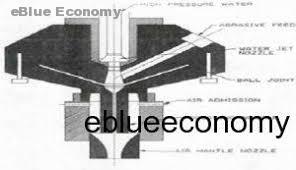
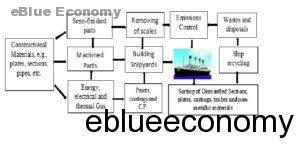
Discussion and Examples about the current Nations involved in Ship Breaking Industries
Ship breaking, recycling and dismantling are processes aiming at steel recovery and building of smaller in dimensions ships using the dismantled panels and making use of the all scraps as well as metallic and nonmetallic materials. One of the biggest recycling facilities in the globe, are allocated near the city of Aliaga on Turkey’s Aegean coast, approximately 60 Km North of the Port of Izmir. The surrounding area is a well-established industrial province, the largest in Turkey, also in close proximity to two major ports. Aliaga is also home to a number of major steel mills.
Turkey was the world’s No. 9 steel producer in 2015. Also provides easy access to a number of industrial facilities dealing with downstream waste management, disposal and recover. LEYAL Yard has recycled a wide range of ships and offshore units, including but not limited to FPSOs, FSOs, aircraft carriers, submarines, tankers, containerships and bulkers, with the largest vessels dismantled being in excess of 40,000 lightweight tons.
LEYAL is the oldest ship recycling company in Turkey, also being the first to have implemented the European Waste Shipment Regulation for the recycling of ships. Turkey in LEYAL has recycled the German Navy destroyer ‘Rommel’ (2004). Also, a founding member and board member of the International Ship Recycling Association as well as a member of the Baltic and International Maritime Council “BIMCO” subcommittee that drafted the standards for European ship recycling.
The most important ten countries till 2010 and 2017 involved in the globe in ship breaking, ship dismantling and ship scrapping industries are as follows. All values are based on a percentage of all activities in the globe.
- 2017
India, at 78% 35.24%
Bangladesh, at 11% 28.60%
China, at 33% 10.48%
Pakistan, at 00 % 11.43%
Turkey, at 82% 12.35%
Rest of the World 96% 1.90%
From the above data for 2010 and 2017 years, the following main points can be noted.
The Indian ship breaking activities have been risen up by almost ~ 3%.
Bangladesh comes the second with increasing level to more than ~ 4%.
Pakistan, though it comes third yet, on the reduction scale by almost ~ 7%.
China which was the third at 2010, loses at 2017 as being the fourth, with a reduction of more than 10% in the ship dismantling and breaking activities.
Turkey comes the fifth place with a respectively big increase in the capacity of ship breaking activities at ~ 9%, and steadily advancing to be at the first middle ofb2017 the third country in the globe.
The rest of the world has almost doubled its activities though the resultant value is still far away from the fifth country, i.e., Turkey by less than 10%.
This proves that the 2018 year is expected to witness more developments in Ship Breaking activities. Turkey is expected to increase her productivity on the expense of India, Bangladesh, China and Pakistan. The four South Eastern Asian Countries will witness more lags and this will move the scale of productivity for Turkey and the rest of the world.
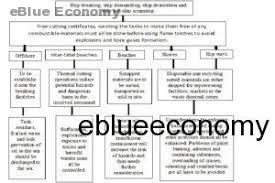

Why should Egypt Properly Establish Clean Green Ship Scrapping Industry
Egypt is an African-Asian country having a coastline on both the Mediterranean Sea and the Red Sea and the Suez Canal is passing through, which extends to about 193 Km. Egypt has coastlines on both the Mediterranean and the Red Seas. The longest geographical unique situation of Egypt as being the interception point between the East and the West gives her the privileges over the five big ship dismantling countries in the Universe. Straight-line distance in Egypt from north to south is 1,024 km (636 mi), while that from east to west measures 1,240 km (771 miles). More than 2,900 km (1800 miles) of coastline on the Mediterranean Sea, the Gulf of Suez, and the Gulf of Aqaba shore. The length of coastline at the Mediterranean Sea is ~ 955 km, while on the Red Sea is ~ 1455 Km including the length of Suez Canal. The total coastal length for Egypt on both Mediterranean and Red Seas is 2450 Km (1,522 miles),
The Suez Canal connects the Mediterranean Sea with the Gulf of Suez. The canal travels a length of 163 kilometers (101 miles), with a minimum width before the new Suez Canal Project, of 55 meters (179 feet) and a depth of at least 12 meters (40 feet). The canal has been one of the world’s most important waterways since its completion in 1869
Therefore, Egypt geographically as well as technically, is able to establish and to accommodate Ship Breaking Industry, however applying green cutting procedures as well as sustainable renewable methods of Energies [10& 11] necessary for dismantling the different ship parts.
History and Background of Ship Breaking and Scrapping Researches in Egypt
One of the earliest researches works in Ship Breaking and ship scrapping, he has studied the possibilities of establishing this industry in Egypt In doing so, Mansy in 2002, has suggested a model for a shipyard specialized in dismantling works. He suggested a method of cutting a ship on floating condition using cutting wire cables and water jets.
El-Gemmal has covered the topic of ship recycling in Egypt from the economic and the engineering sides, in 2005. Seven years later, Wilayat et al [14], have added some new assets of ship recycling recommended to apply in Egypt. Tudors, [15], has concluded that the shipbreaking activities in Egypt at present are all being done through side works in Egyptian Shipyards. He suggested a fuzzy model to be used in ship recycling operations. He concluded that, though there is a long history of ship breaking activities in Egypt, yet all are being carried out by some personal unskilled labors with primitive cutting tools.
It is noted that at Abu-Qir Port and at the north western sides of the wave breakers of Alexandria and Dekhela Ports that there are a number of stranded and grounded vessels. Only the above sea surface panels and all of the outfitting above and below the main deck, are being dismantled together with deck gears, engines both main and auxiliaries all being removed, leaving the rest of the ship in her place causing collisions and damaging the site and harm to the navigation to and from the Ports. This is evidently clear seen and noted.
The Eastern Bank of the Suez Canal is the fruitful area for ship breaking industry in Egypt. This is mainly due to the access in the possessed connection at the interconnection junction between the Red and the Mediterranean Seas. This allocation gives her the privileges of establishing one of the most recently sustainable and renewable industries, a nation could dream to own.
Aims and Venues of the Current Research Paper
The venue of this paper is to propose a practical based on collected data from different involved countries in ship breaking industries in the globe. This paves the way to apply the “3R’s” Concept in ship recycling. Figure 3, shows the Philosophy of the 3R’s Approach, which is being based on Risk Analysis, which in turn should be based on sustainable renewable assets in ship breaking industry as well as on considerations of root cause analysis. Figure 4, indicates how the dangers as well as the risks involved in manual transportation of the dismantled panels and the scrapped products as being used in South Eastern Asian Countries, [16 & 17].

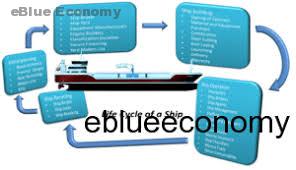
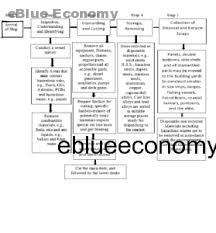
Sustainable and Renewable Philosophy in Ship Breaking, Recycling
Dismantling Processes the “3R’s Concept”
The products of the ship dismantling process are either sustainable leading to renewable uses or disposable wastes. Recycling at large is defined as being the aim to reduce waste streams and accordingly reducing the resulted adverse effects on the environment, the personnel and the products themselves. Recycling means applying the renewable steel streams ready for being used while reduction in the resulted wastes and disposals, as well as in the toxic and harmful products, must be the main asset in the ship demolition industry. The control of waste means the optimization of the dismantling process, i.e., keeping the environment clean, safe and green.
Therefore, applying the “3R’s” concept will include and require feasibility studies for selling the dismantled products. Also, how to deal with the cutting processes applying friendly in nature equipment. Thus, will reduce and control the side effects of losing the demand against the impacts of damaging to the environment and causing harm to the involved man power. Hence, ship recycling is converted to sustainable in the development phases leading to green economic and prosperous friendly products, by applying International Safety Codes of waste removal during the dismantling process operations.
The different proper dismantled constructional parts, engines, and gears as well as auxiliary machineries can be recycled in building new smaller vessels. Of course, those sustainable and renewable philosophies are being based on the ship’s life cycle. i.e., on her age, condition of the dismantled parts and on the disposable waste the cutting. Figure 5 shows the different involved processes to end the ship life recycle. The figure which, was originally quoted and reproduced from Refs [18& 19], indicates the different zones involved in ship demolition activities shows the recommendations to follow for safe cutting and ship scrapping.
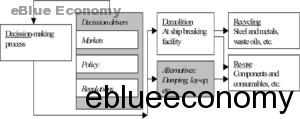
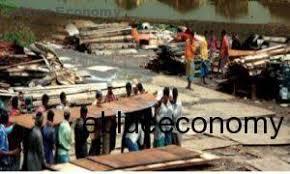
International Codes of Practices Dealing with Ship Breaking Industries
Role of IMO Regulations in Life Cycle Span of Ship’s in service
IMO regulations have been set to ensure that no harm and hazardous wastes polluted the surrounding land and sea by arranging a proper layout and providing proper facilities and working procedures
IMO has set guidelines for the life span for cargo ships of up to 20- 25 years while for passenger ships the span of life is set at 15 – 20 years. This age covers the economic life span and the almost trouble free life from fatigue and corrosion problems Of course those ages are aiming at controlling and reducing the operational costs, especially when a vessel ages and maintenance costs become too.
The life cycle for most ships, from cradle to grave or makers to breakers, gives a life span of operation of 20-25 years, or more, [23 &24]. In 2001, the Organization for Economic Cooperation and Development, “OECD” noted an increasing casualty rate for older ships remaining in operation, especially for bulk ships and tankers. The steady withdrawal of older ships and their replacement by new tonnage, therefore, is a natural commercial process which provides the opportunity for the introduction of safer and more environmentally friendly designs. Those designs are leading to greater operating efficiency with a general achieved reduction in marine risk. Figure 6 indicates the ship’s life cycle and the relationship between the life cycle and the lifetime span for a ship,
Modern ships have a lifespan of 25 to 30 years before metal is being either corroded and or fatigued as well as lack of spare parts render them uneconomical to run. Therefore, ship breaking allows the materials from the ship, especially steel, to be recycled and made into new products. This lowers the demand for mined iron ore and reduces energy use in the steelmaking process. Equipment on board the vessel can also be reused. Ship breaking is sustainable process there are concerns about the use of poorer countries without stringent environmental legislation. It is also considered one of the world’s most dangerous industries and very labour–intensive as described by OSHA
Different areas and scopes of ship dismantling industries are shown in Figure 7. The figure indicates the breaking activities in offshore zones inter tidal beaches areas, beaches, shores and slip ways. For Every stage of the five zones there are specific tasks to be carried out. Also, is shown in the figure the expected warrant risks and a summary of the obligatory safety measures to avoid haphazard risk problems during the dismantling process in each stage.
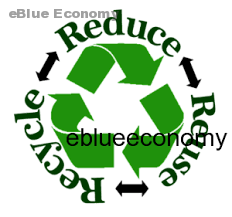

Role of OSHA
The process of ship breaking involves a number of rules and regulations mainly because of the amount of hazardous materials a ship contains and the resultant toxic fumes and poisonous materials. The Organization of Safety and Health Administration has succeeded in putting some guidance towards man power safety and all who are involved in Ship Dismantling Industry, The lack of proper definition and registration of ship owners lets them avoid legal consequences by passing on end-of-life-vessels through dummy ship owners.
If there are problems, these ship owners cannot be traced; usually, they are registered as a post box company and have no proper address. The yards in Far Eastern South Asian Countries, employ directly or indirectly, thousands of poor migrants who keep coming despite the dangerous and dirty conditions in ship breaking yards and poor living conditions.
The present situation and developments regarding workers’ safety and occupational health, the workers take shelter in makeshift arrangements made out of plywood taken out of the ships. Often, there is no sanitation or safe drinking water supply. Drainage facilities are missing and mosquitoes breed in the stagnant water. Difficult work and living conditions turn many workers to alcohol and gambling.
The workers are prone to lung and chest infection, tuberculosis, dysentery, diarrhea, malaria, cholera, and common fever. These diseases are common in India’s slums and villages; however, it is important to study what can be considered specific occupational health risks of the workers at the ship dismantling sites,[25].The involved processes can be as illustrated and shown in Figure 8. This figure illustrates all various steps to carry out optimum and successful stages of ship dismantling and scrapping.
Role of ILO
The International Labor Organization (ILO), [25- 29] is the specialized agency mandated to set standards on occupational safety and health (OSHA), [24] for all involved workers. ILO has adopted various Conventions and Recommendations, including in March 2004 the ILO Guidelines on Safety and Health in Shipbreaking: Guidelines for Asian countries and Turkey, [29]. Figures 9 indicates the problem of respiration which is expected to be cancer and lung diseases resulting in case of wrong and dirty ship demolition, the photo at the right hand is for a worker putting on the right means of protection dress and helmet
Role of MARPOL Legal Framework on Global Ship Breaking
Ships that come for demolition pose several hazards to workers’ lives. Both residents and migrant workers are exposed to the chemicals present in ships. Decontamination, a pre-condition set by the Supreme Court of India for dismantling permission, does not happen in practice. Generally, there are two main International conventions relating ship breaking processes and the resulted waste.
The first is the MARPOL, while the second is the London Convention. MARPOL convention rules against oily discharge, and should apply to ship breaking yards in South Asia as they discharge oil and other greasy materials. It also requires the ship owner to pay for cleaning up the pollution from his ship. The country of the ship breaking yard would inspect this information before permitting beaching. By the Polluter Pays principle, the ship owner and the exporting country are directly responsible for any kind of pollution and must pay the clean-up cost, ].
Role of Basel and Hong Kong Conventions,
The 2004 Basel Convention is the most important convention for end-of-life vessels, following the 2002 technical guidelines on ship breaking. The Basel Convention has been ratified by 172 state parties, including India and Bangladesh. The Basel Convention aims to protect human health and the environment against hazards that may result from generation, trans-boundary movement, and management of hazardous waste.
It has two main pillars, e.g., control system for any movement of hazardous waste must be adopted to initiate reduction of such waste and environmentally sound management of wastes must be guided to minimize waste generation and to control hazardous effects aiming at controlling environmental changes. Ship owners are obligated to request the authorities for permission to scrap a ship. The obligation includes prior informed consent and determining that the scrapping yard complies with all Basel Convention guidelines.
Role of ICS
The International Chamber of Shipping “ICS” established an Industry Code of Conduct in 1999 in light of the growing concern for environmental pollution, which proposed that three kinds of inventory be maintained for every ship and handed over to the ship breaker.
The three kinds of inventory proposed were of
Materials that are part of the ship’s structure,
. Parts held as storage and spares, and
Substances used in the final journey, such as oil and wastes
Role of the EUROPEAN UNION on Ship Breaking Activities
In 2008, 456 vessels were demolished out of which 177 (39 per cent) were under European flags or belonged to ship owners established in the European Union or to members of the European Free Trade Association. The European Commission (EC) has started its own process in improving the situation regarding ship dismantling.
A Green Paper and a communication proposing an EU Strategy on better ship dismantling have been adopted in 2007 and 2008, Rule original owners of ships are responsible for cleaning ships and prosecute intermediate buyers and ‘dummy’ owners; and Rule that ship owners clean their ships and/or have toxic materials replaced with safe alternatives when ships undergo repair or maintenance.
Role of ISO Standards for Safe and Environmentally Sound
ISO 30000:2009 specifies requirements for a management system to enable a ship recycling facility to develop and implement procedures, policies and objectives in order to be able to undertake safe and environmentally sound ship recycling operations in accordance with national and international standards, ISO/PAS 30005:2010 provides guidance for the management, communication, and maintenance of information in an effective, standardized, and compatible manner in accordance with the requirements of the Hong Kong International Convention for the Safe and Environmentally Sound Recycling of Ships.
Revised copy of 2010 has been carried out by 2012. ISO/PAS 30005:2012provides guidance for the management, communication, and maintenance of information in an effective, standardized, and compatible manner in accordance with the requirements of the Hong Kong International Convention for the Safe and Environmentally Sound Recycling of Ships. The last version of ISO/PAS 30005: 2012 defines the life cycle of a ship. It is to be revised every five years starting from the year 2000 and onwards.
Ship and Port Safety Code (ISPS) and SOLAS Convention
The International Ship and Port Facility Security (ISPS) Code is an amendment to the Safety of Life at Sea (SOLAS) Convention (1974/1988) on minimum security arrangement for ships ports and government agencies. Having come into force in 2004, it prescribes responsibilities to governments, shipping companies, shipboard personnel, and port/facility personnel to “detect security threats and take preventative measures against security incidents affecting ships or port facilities used in international trade.
The involved in ship breaking company must be certificated by the local authority in the implementation of the International Ship and Port Safety Code (ISPS). The involved shipyard has a strategic position, i.e., the company must be allocated at the nearby eastern Port Said of the Suez Canal. The Shipyard must be equipped with a synchrony-lift system, with suitable number of dry docking facilities and its corresponding support workshops in the Mechanic, Welding, Sandblasting and Coating areas.
Recommended Future Plans of Work
There still research works need to be carried out, therefore, the author recommends to further study the following main assets and points.
The feasibility study presented within the present paper must be enlarged to include effective parameters based on the chances of establishing a concrete solid ship breaking industry in the Suez Canal Eastern Branch. This project can share and contribute to gain and to create good experience and open chances as well as will lead to improve of the economic productivity of the Nation at large.
This industry once would be established correctly then nourishment of Egyptian economy as well as green fruitful future for our generations will be expected and good future will be expected. The involved processes in ship dismantling activities need some education, training and experience. Therefore further study for the problems of expected to occur during working in ship breaking must be enhanced to obviate any major problems and sorting out any obstacles, from happening in Egypt.
Stimulated results from hazard control in view of using green sustainable renewable energy sources needs to be supported through root cause analysis application and implementation. Situation mainly to understand the characteristics of ship dismantling, to what extent it damages the environment, the steps taken recently to achieve improvements, the dynamics of the sector, the actions of various international agencies, and the significance of treaties.
The Egyptian Ship Breaking and dismantling as well as ship recycling should be established based on the vast experience gained from other countries. Environmental aspects could be controlled through the application of using sustainable renewable energy resources in all involved operations in dismantling shipyards. Operations such as cutting, welding and forming as well as dismantling must all use friendly with nature tools and thus environmental changes are being controlled. This point must be discussed in recent renewable and sustainable clean e4nergy sources.
Subsidiary incomes and outcomes from the ship breaking, ship dismantling and ship recycling have been based on logic sound and firm distinguished integration between several industries. Building of smaller vessels using the good broken panels, of different sizes and different functions as well as the outcomes from different broken and dismantled metallic and nonmetallic parts and materials. Ship breaking dismantling and reducing the scraps and wastes all will lead to better environmental control as well as to better earnings. This point needs further investigations.


